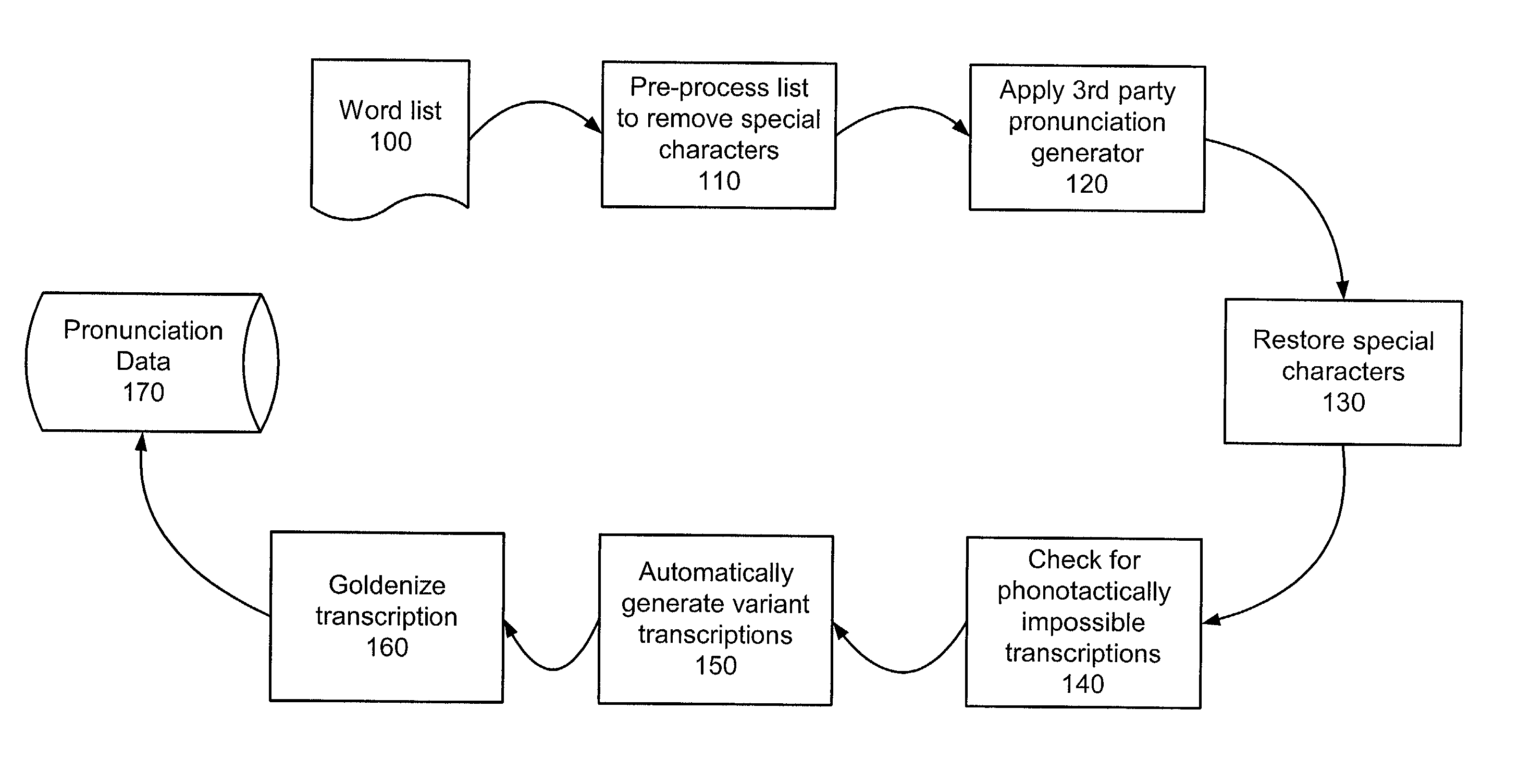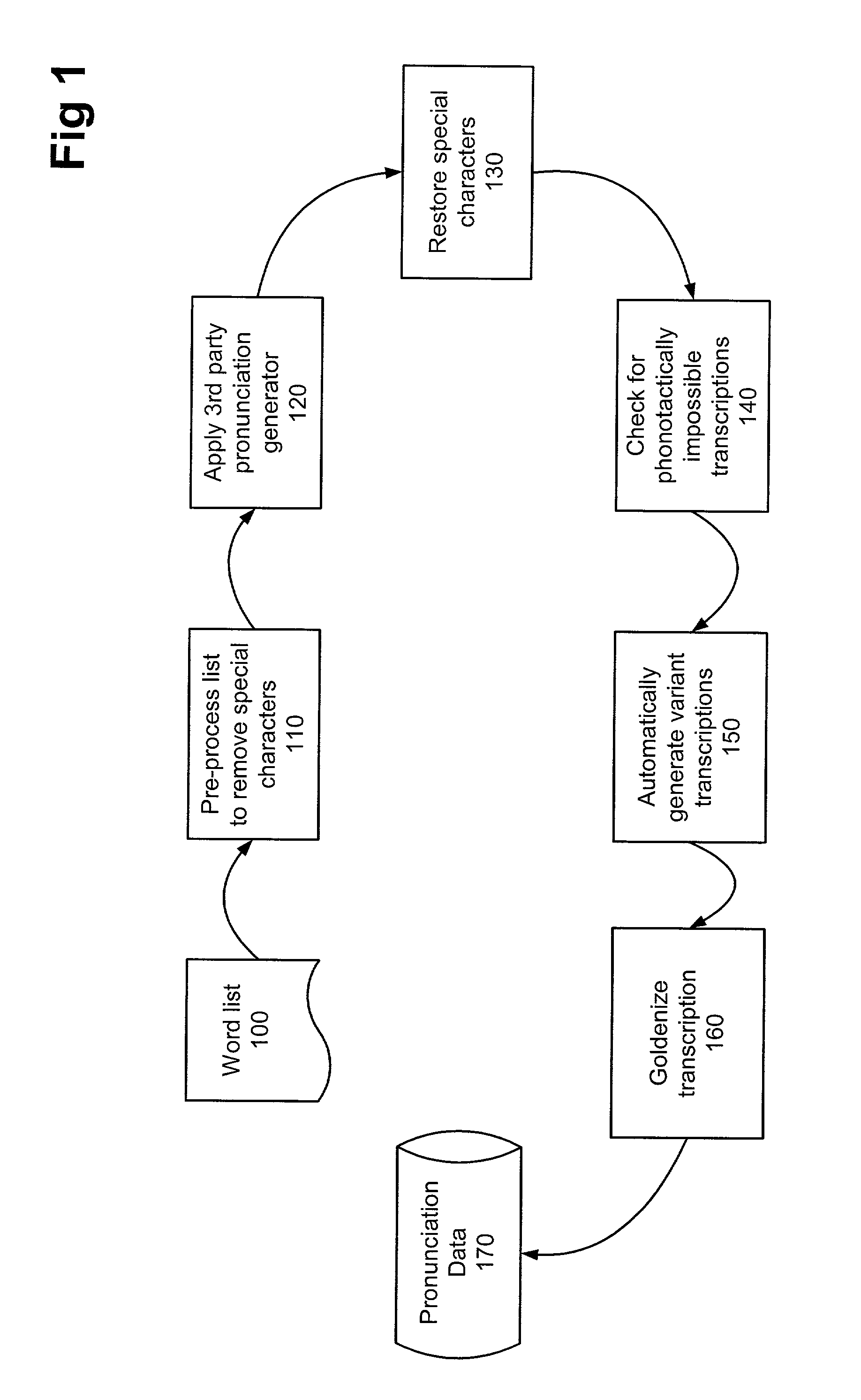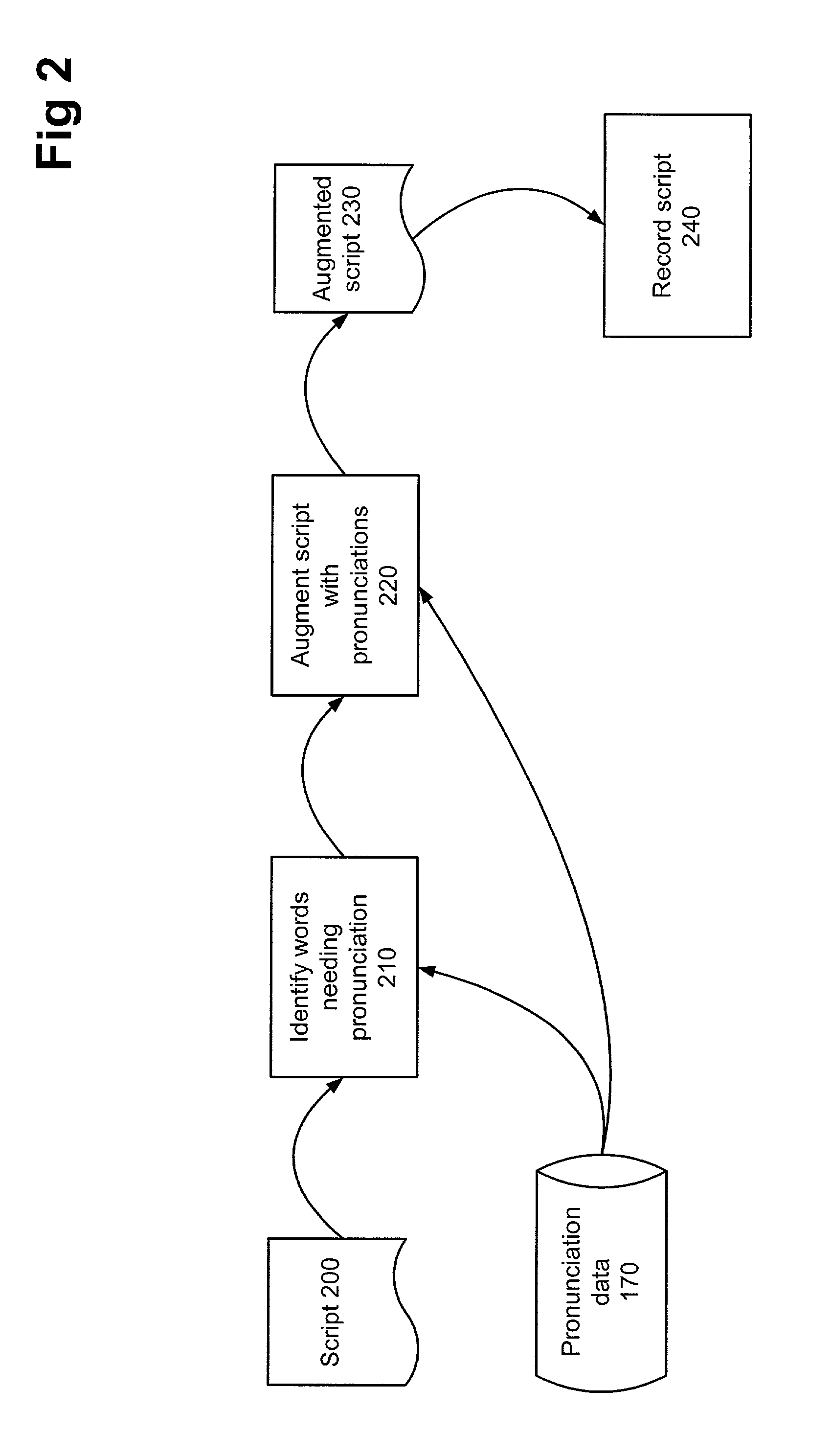Automated creation of phonemic variations
a technology of automatic creation and phonemic variations, applied in the field of phonetics, can solve the problems of inability to accurately represent the glyphs of symbols in standard computer fonts, transcriptions that do not correspond well with the actual pronunciation used by native speakers, and mistakes in recognition, so as to improve the quality of transcriptions
- Summary
- Abstract
- Description
- Claims
- Application Information
AI Technical Summary
Problems solved by technology
Method used
Image
Examples
Embodiment Construction
A. Introduction
[0022]The process for generating phonemic variations using a computer system will be described with reference to FIG. 1. The process of FIG. 1 can be implemented using one or more computer systems with, or without, a direct human operator.
[0023]The process starts with a word list 100 comprising one or more words for transcription. The words can be represented using one or more standard character sets (e.g. ASCII, Unicode, etc.) in one or more text encodings (e.g. ISO-8859, UTF-8, UTF-16, etc.). In a preferred embodiment, each word is placed on a separate line. A portion of an exemplary word list 100 is shown below:
[0024]Marlborough
[0025]O'Reilly
[0026]Watson
[0027]Winchester
[0028] . . .
[0029]In the above example a few city names and some last names are shown. Though more generally any American English word or name could be provided. In some embodiments the word list 100 is extracted from one or more speech recognition grammar formats that associate one or more words wit...
PUM
 Login to View More
Login to View More Abstract
Description
Claims
Application Information
 Login to View More
Login to View More - R&D
- Intellectual Property
- Life Sciences
- Materials
- Tech Scout
- Unparalleled Data Quality
- Higher Quality Content
- 60% Fewer Hallucinations
Browse by: Latest US Patents, China's latest patents, Technical Efficacy Thesaurus, Application Domain, Technology Topic, Popular Technical Reports.
© 2025 PatSnap. All rights reserved.Legal|Privacy policy|Modern Slavery Act Transparency Statement|Sitemap|About US| Contact US: help@patsnap.com



